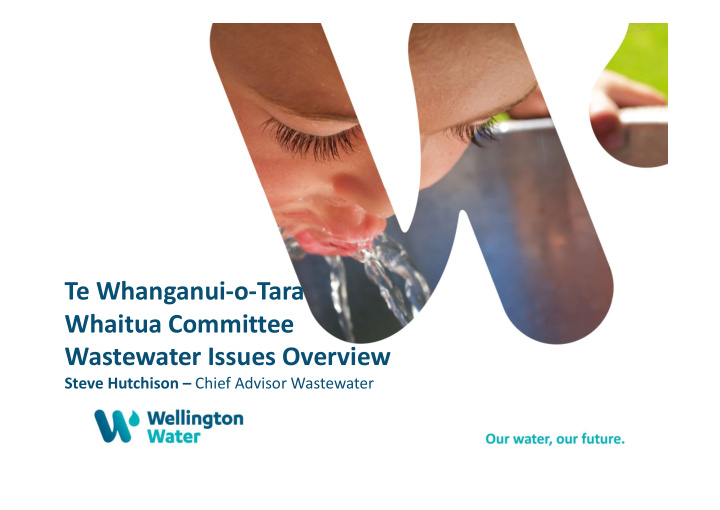



Te Whanganui-o-Tara Whaitua Committee Wastewater Issues Overview Steve Hutchison – Chief Advisor Wastewater
Wellington and Public Health History • 1840 – Wellington European settlement commenced – first ship of 150 settlers - ‘Aurora’ • 1841 – population 3,227 most waste to cesspits • 1865 –Wellington becomes NZ Capital. Sewage washed into grounds from surrounding streets • 1870 – no well water was safe to drink • 1872 – NZ Public Health Act – sewerage systems required - cesspits banned • 1875 – John Plimmer and other businessman strongly opposed to sewers and high cost of scheme • 1876 – Population 10,956. Mortality Night-man night-soil collection Dunedin, 1912 of 26.01 per 1000 per year Otago Settlers Museum Ref 1989/268/13
• 1878 – First sewer scheme developed by W.Clark (£145,000) – 25% combined – 1 inch rainfall History • 1880 – population 20,000 – night soil collection • 1888 – Shone pneumatic ejector system proposed (H.P Higginson). • 1890 – 77 deaths linked to sewage soaked backyards. Drainage Commission appointed by Wellington Council - consisting of Engineers E. Cuthbert and W Ferguson. Scheme recommended. • 1893 – Sewerage scheme construction started • 1899 – Sewer network largely completed at a cost of £175,000 • 1901 – population 50,000 - Wellington Typhoid outbreak 1892 Wellington City Archives (Ref 00233:84:1892/740 Typhoid Map
Our wastewater network Business and trade waste Private laterals Council mains Our homes Reticulation network 2400 km Pumping stations Coastal discharge Treatment plants Coastal discharge
Network layout
Wastewater components • Currently 420,000 population • Average 150 million litres wastewater daily 50-60 tonnes faecal matter 500,000 litres urine Trade Waste Groundwater infiltration Mostly “greywater” • Other solids / fats / rubbish
Challenge 1 - Dry weather blockages
Wet wipe blockages
Public education campaigns https://www.youtube.com/watch?v=omCOYw3C9lw
Challenge 2 – Leaks and overflows
The wastewater pipe network
Inflow & Infiltration • 10% fault rate
Network faults – CCTV inspection
Example of storm event
Rainfall impact on wastewater flows
Overflow overview
Reducing network impacts 1. Increasing capacity 2. Improving condition 3. Reducing infiltration
Challenge 3 - Wastewater treatment
Sludge generation
Questions
Recommend
More recommend